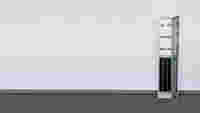Clever Lighting Scenario

LED technology and the I/O controller from WAGO create the perfect lighting symbiosis: Schuster Energieversorgungssysteme, an energy supply solutions specialist from Grevenbroich, is creating quite a stir with its innovative, manufacturer-independent system for emergency lighting. Early adopters in the automotive industry are leading the way, and companies from other sectors are showing great interest. The WAGO 750 Series I/O System forms the core of the lighting solution and implements the intelligent lighting control functions.
When it comes to safety lighting systems, no other company is as innovative as Schuster Energieversorgungssysteme GmbH & Co. KG. For four decades, this company in Grevenbroich, Germany, has mitigated the effects of power failures by producing sophisticated systems for emergency lighting, rectifiers and inverters, as well as other solutions. The firm has a legacy of consistently producing innovative ideas backed by the highest quality. This has earned Schuster an excellent reputation, backed by outstanding customer testimonials. For example, this company from Grevenbroich has equipped the Berlin Olympic Stadium, Apple Stores in Germany and major trade shows in Frankfurt and Dusseldorf. Recently, Schuster found itself in an enviable role: Not only is the company widely regarded as the best in their field, but, thanks to recent breakthroughs, they are now also seen as their sector’s leader in technological development.
The Benefits of WAGO for You:
WAGO's fieldbus-independent system enables communication with all conventional building bus systems.
Users have a free choice of software thanks to the PFC200 Linux® Controller.
Each LED light can be individually controlled via DALI with the WAGO 750 Series I/O System.